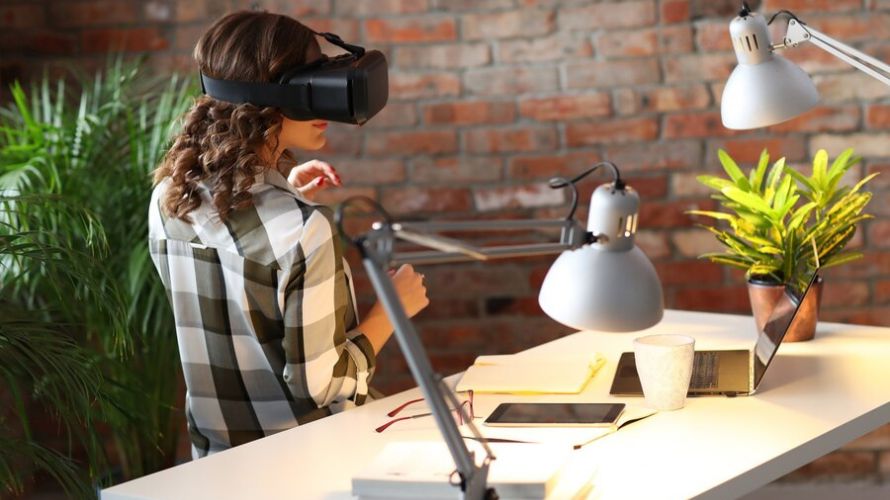What Is VR/XR Virtual Filming?
In filmmaking, VR/XR virtual filming means using these technologies to create film environments, scenes, and even full cinematic experiences that either transport the viewer into a completely virtual world (VR) or blend real-world settings with digital elements (XR). It allows filmmakers to create environments without being limited by physical space or resources.
How Does VR/XR Virtual Filming Work?
The process of VR/XR virtual filming leverages various technological innovations that help bridge the gap between traditional filmmaking and the virtual world. Here are the key elements:
1. Virtual Production Stages:
Virtual production stages, also known as LED volumes, use massive LED screens to display digital environments around live-action performers. This allows directors to create detailed and dynamic virtual sets that react in real-time, eliminating the need for green screens.
2. Real-Time Rendering:
Real-time engines like Unreal Engine or Unity render environments instantly, enabling filmmakers to see how their digital worlds will look while shooting. This gives directors greater control over camera angles, lighting, and scene composition.
3. Motion Capture Technology:
By using motion capture suits and facial recognition software, actors’ performances can be mapped onto digital characters, allowing them to “act” in virtual settings while still being recorded in real-time.
4. XR Headsets for Real-Time Visualization:
Directors and crew members often use XR headsets to visualize and interact with virtual sets during production. This helps them understand the relationship between physical actors and digital assets in the scene.
Top Benefits of VR/XR Virtual Filming
VR/XR virtual filming has introduced a range of benefits that are reshaping how films are made:
1. Unlimited Creative Potential
One of the most exciting aspects of VR/XR filming is the removal of physical limitations. Filmmakers can create vast, otherworldly environments that would be impossible or prohibitively expensive to build in real life. From fantasy landscapes to futuristic cities, there are no boundaries to what can be achieved in a virtual set.
2. Cost-Efficiency
By creating digital sets and environments, production costs are significantly reduced. There’s no need for expensive set construction, location shoots, or transporting entire crews across the world. With real-time rendering, directors can create their desired settings in an instant.
3. Improved Collaboration
With XR tools, teams from different parts of the world can collaborate in the same virtual environment. Directors, actors, set designers, and visual effects teams can all interact in real-time, no matter their physical location.
Examples of VR/XR Virtual Filming in Action
1. The Mandalorian (Disney+)
One of the most notable uses of XR virtual filming is Disney’s The Mandalorian. Instead of relying on traditional green screens, the production team used a cutting-edge LED volume to create the vast desert planets and space settings of the series. By projecting these environments in real-time, the actors could interact with their surroundings naturally, making scenes more realistic.
2. The Lion King (2019)
Jon Favreau’s The Lion King remake utilized VR technology to bring the savannah to life. The crew used VR headsets to immerse themselves in the digital world they created, allowing them to simulate traditional camera movements and direct the film as if they were filming in a physical environment.
Conclusion:
VR/XR virtual filming is rapidly transforming the way stories are told in film, television, and beyond. By combining the limitless potential of virtual worlds with the real-time interaction of traditional filming, this technology offers an exciting glimpse into the future of cinema. While it comes with its own set of challenges, the benefits far outweigh the obstacles, especially as technology continues to evolve and become more accessible.



